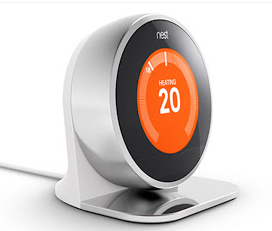Hype, excitements, risks, threats, benefits and holistic recommendations surrounding the Internet of Things.
 |
| Smart thermostat |
When it comes to Internet of Things, Connectikpeople.co talks about connected and unified countless objects and systems (Devices and
their cloud, network and client application components).
The most exciting with this technology, it is its ability to capture,
process and provide critical data and insights we need in real-time to
streamline our business and IT operations, improve our living conditions and implement
sustainable development.
It is encouraging to observe that the rise of IoT, the number and diversity
of connected devices is expected to increase exponentially. According to
Gartner, “the Internet of Things” will include 26 billion units installed by
2020. IoT product and service suppliers will generate incremental revenue
exceeding $300 billion, mostly in services, in 2020.”(1)
It is also exciting to observe that manufacturers are quickly bringing to
market connected devices, cloud access capabilities and mobile applications.
But beyond unmatched benefits to consumers, according to certain
researchers, the
Internet of Things is also the open-door for security threats ranging
from software vulnerabilities to denial-of-service (DOS) attacks to weak
passwords and cross-site scripting vulnerabilities.
This means it is vital to build security into these products from the
beginning to disrupt the adversary and avoid exposing consumers to serious
threats.
From smart sensors, manufacturers of TVs, webcams, home thermostats, remote
power outlets, sprinkler controllers, hubs for controlling multiple devices,
door locks, home alarms, scales and to garage door openers, the most common security
issues reported include: Privacy
concerns; Insufficient
authorization; Lack of transport
encryption; Insecure web
interface and Inadequate
software protection.
Therefore Connectikpeople.co recommends organizations to
implement an end-to-end approach to identify software vulnerabilities before
they are exploited. Organizations also need the ability to test the security of
software quickly, accurately, affordably and proactively eliminating the
immediate risk in legacy applications and the systemic risk in application
development. The end-to-end encryption is vital.
(1)
Gartner, “Forecast: The
Internet of Things, Worldwide, 2013,” November 2013.

